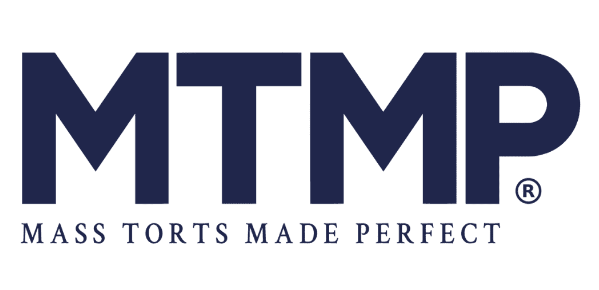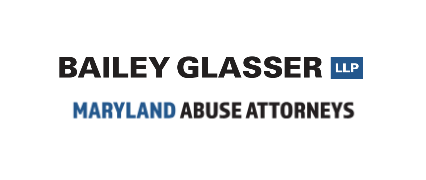Jon Robinson:
Hello everyone, and welcome to another CaseWorks stream.
Jon Robinson:
We are honored to be joined today by Susan Barfield, our CEO at CaseWorks, and Joe Fantini of Rosen Injury Lawyers to talk about ramping up a mass tort practice, something that both of our guests here today know very well.
Jon Robinson:
For those of you who are joining us for the first time, you can catch all of our streams at yourcaseworks.com/stream. If you want to watch the videos, we’re also on YouTube, and we now have a podcast you can catch on Spotify, iTunes Podcasts, and all the other podcast platforms as well, if you want to listen in the car.
Jon Robinson:
Susan, Joe, thanks again for joining us.
Susan Barfield:
Thank you, Jon, for having us.
Joe Fantini:
Thanks for having me.
Jon Robinson:
Susan, you want to introduce yourself and CaseWorks?
Susan Barfield:
Yeah, happy to. I’m Susan Barfield, CEO and founder of CaseWorks. CaseWorks offers an outsource solution for law firms. What that means is we provide all the case development services needed for either mass tort or personal injury cases.
Susan Barfield:
We get involved at the point at which there’s a signed retainer, provide all the client and case management throughout the case development pipeline, and we order the medical records, review the medical records, and we have a team of paralegals that can complete and tort forms.
Susan Barfield:
Been doing this since about 2015, super excited to have Joe on the call today. CaseWorks has been working with Joe for a couple years now, and it’s just been really exciting to see how he’s started his mass tort practice and just really taken off.
Susan Barfield:
So thank you again, Joe, for taking time to be with us and excited to have your input and feedback.
Joe Fantini:
Thanks for having me, Susan.
Joe Fantini:
Excited to have this conversation and talk a little bit about our relationship, and how you’ve helped my law firm grow here over the last couple of years.
Jon Robinson:
Joe, do you want to get started just telling our audience a little bit about yourself, and about what your firm focuses on?
Joe Fantini:
Sure. My name is Joe Fantini. I’m the managing attorney over at Rosen Injury Lawyers. We’re a national mass tort law firm. Previously, I worked at another nationally recognized plaintiff personal injury and class action law firm.
Joe Fantini:
I have unique experience coming from an established firm, and then coming over and starting a brand new firm from scratch. We’ve been at it over here about four years now, and Susan’s been with us for most of the way. Starting as just an idea to where we are now, where we’re representing an excess of 10,000 clients at the current time.
Jon Robinson:
How do you decide which case types your firm is going to pursue?
Joe Fantini:
There’s a lot of factors that go into it. Some of the factors that we really like to focus on is first the numerosity. We want to see if we can determine the potential pool of the total number of claimants out there. We know in each litigation, there may only be 10% of the injured parties to actually come forward and assert a claim. We want to make sure there’s enough people out there that we’re able to help, and makes it worth our time to get involved.
Joe Fantini:
Another factor we look at is the science. Each one of these cases, it’s going to come down to the medical records, as Susan always says. We want to make sure that the science is behind it, so that we know whatever the correlation is, that we have that causation needed to get us over the hump, get us past that expert ruling.
Joe Fantini:
Another part that we look for is the damages in each one of these cases. There’re certain cases, just like a regular personal injury case, they’re worth a lot more than other ones. We want to always get involved in cases that we believe in.
Joe Fantini:
We’re not just here to make money. We’re here to help as many people as possible. These cases, they become our causes. So we really are passionate about the cases we get involved in.
Jon Robinson:
Are you working with other firms, as far as either accepting referrals or sending out referrals? Can you talk about that relationship for firms that are looking to just get into mass torts?
Joe Fantini:
That’s a big part of mass torts, is the relationships. That’s something unique that I have. I’ve been in this space here for more than a decade. So I know all the big players, I have great relationships with those firms. Also, I know some other colleagues that are younger and have their own firms, traditional PI firms that are sending me cases as well.
Joe Fantini:
Accepting referrals is a big part of what we do over here. What we try to do is always treat that referral as if it was our own, and give the client that personal touch and that personal interaction that they want, while keeping the referring attorney updated.
Joe Fantini:
We’ve also referred out other cases to other law firms, because there’s a lot of cases for hernia mesh. There could be eight different litigations we’re working on. Depending upon the total number of cases we have in one litigation, it might make sense for us to refer it out. Or other instances, in order to get the maximum award for our clients, it might make sense with us to partner with another law firm to help with those settlement negotiations.
Joe Fantini:
There’s a tight community here that that does mass torts, and we’re all pretty friendly with each other. But then we’re also welcoming to the new guys who just might have a couple cases just looking to refer them out or also starting to build their practice. That’s something that I’m happy to always talk about, and gone through it the last couple of years, myself. So I have some good insight to that, and learned a lot from Susan and had a lot of talks with her about the right way to grow and scale a mass tort law firm.
Jon Robinson:
Susan let’s talk about that. If a firm is not currently in mass torts, they’re doing single event PI cases, and they want to dip their toe in the water. What are some of the things that a firm needs to have in place to make that transition?
Susan Barfield:
That’s a great question. We often talk to folks that are interested in getting into mass tort, that have historically done single event PI cases.
Susan Barfield:
The first thing that I share with them, it’s a whole nother beast. You’re not going to run your mass tort practice like you do your PI practice. It’s things to think about and consider.
Susan Barfield:
I understand a successful mass tort practice can take a law firm to the next level. Mass tort cases, they’re definitely attractive because of the relatively low cost per case acquisition, as compared to the high potential revenue. I understand why people want to get into mass tort, but it certainly can be overwhelming for newcomers.
Susan Barfield:
One of the things we talk about is, from the moment that a firm decides to take on a mass tort case, it’s important to start taking steps to manage the upcoming onslaught of the clients, and the research, and the paperwork.
Susan Barfield:
I think that’s one thing that Joe does really well. You’ve got to stay abreast of the litigation, understand the science, is there new injuries? Had the injuries changed, is there cancers that they’re no longer taking? You’ve got to stay on top of that. It’s a full-time job for sure.
Susan Barfield:
Some of the things initially attorneys and firms want to consider and think about is, can they handle the mass tort cases? Do they have the infrastructure in place? I’m not talking about an infrastructure just based on the amount of people required to really move mass tort cases through the case development pipeline, but do they have the technology infrastructure?
Susan Barfield:
Joe talked about over 10,000 cases. It’s a lot of work to handle thousands and thousands of cases and clients, and all their inbound calls. So you’ve got to have the telephone platform, and you have to have the case management system.
Susan Barfield:
Does that firm have the logistical capability to handle that litigation? Are they considering ways to streamline their daily process, leveraging automation and digital tools?
Susan Barfield:
Joe, we kind of asked and talked about earlier, are you going to partner with a lead firm, someone that’s on leadership? Are you going to refer out those cases? And if so, something to consider is, I’ve heard this often from firms that refer cases out.
Susan Barfield:
They’ve acquired thousands of cases, they refer them out to someone, a leadership. But then that firm doesn’t have the reporting capabilities to provide back the feedback on a monthly basis on what’s happening with their cases.
Susan Barfield:
They’re kind of referring them to a black hole. Do they have the relationship, and are they going to have the expectation?
Susan Barfield:
I know Joe does. It’s going to have expectation on anytime you refer out cases to a firm and getting monthly reports on what’s happening with those cases, and does that firm and your firm have, and when I talk about infrastructure, do you have a team in place that can keep these clients engaged and informed throughout the process?
Susan Barfield:
Because maybe you refer the case, but the litigation doesn’t settle for another two or three years. How are you going to keep those clients informed and engaged off the process?
Susan Barfield:
I would say those are the things that initially, we talk about with firms that are wanting to get into mass tort, because I don’t think they appreciate and realize it’s just a whole different ball game. There’s a lot of things that need to be in place before you spend the money to acquire those cases.
Jon Robinson:
Those are great points. Let’s talk about spending the money to acquire those cases. For firms that are looking to generate them, you’ll get a small PI firm that may come across a case or two, just coincidentally, amongst some of their branding exercises they’re doing or through other PI cases that they’re getting. But marketing for mass tort cases is very different from marketing for single event cases.
Jon Robinson:
Joe, do you want to tell us a little bit about how a firm that’s looking at getting into mass torts should approach marketing and lead generation for mass torts?
Joe Fantini:
That’s a huge part of it. First, I’d just like to touch on what Susan said. She mentioned, you should consider the case management process and how you’re going to work them up once you get the cases. You should really talk to Susan before that, because if you start getting dozens or hundreds of cases, and then you’re starting to look, what am I going to do with them? You could run into trouble. If you want to get involved in mass torts, you really want to map this out. It is almost a business model in itself.
Joe Fantini:
Respectfully, a lot of people don’t know what mass torts are, how it really works. It’s this little weird niche area that we have, and you got to have this area of expertise to handle these cases, and that even relates to the marketing. The marketing, there could be hundreds or thousands or tens of thousands of potential clients out there.
Joe Fantini:
There’s really three phases I look at in marketing for when you want to get the cases. You could get the cases in the beginning of the cycle. This is when the recall comes out right away, or the first negative study comes out. You could get a lot of cases, you could get them for cheap, but you’re going to be holding on to them for a long time.
Joe Fantini:
This typical life cycle could be five years. As the case evolves, and the science become stronger, some of those cases are going to drop out.
Joe Fantini:
That’s another point, the midpoint of the life cycle. Maybe two years into the case where we know which kind of cases we feel good about, what’s going to survive. Daubert what cases the leadership’s supporting.
Joe Fantini:
And that would be another point where you could come into the marketing and still acquire a lot more cases where the risk would be a little bit less than it was in the beginning of that cycle.
Joe Fantini:
And then as cases progress along, their acquisition cost is going to increase because there’s less potential plaintiffs out there. There’s a little bit less risk, and you get towards that settlement phase and you can market and still get clients.
Joe Fantini:
But there’s also some risk involved with that because there could be dual reps, people who are unsatisfied with their current attorneys, they’ve been shopping around a little bit.
Joe Fantini:
All throughout this cycle, there’s always an opportunity to help people. What our firm tries to do is we try to brand ourselves and be known as a national mass tort firm that specialize in these cases. Traditionally, mass torts involve pharmaceutical drugs, the medical devices. I’d say over the last three to five years, it’s evolved into some consumer products with standard common injuries. Think 3M ear plugs. You think Roundup, you think talcum powder.
Joe Fantini:
Ten years ago, nobody would have thought of those as mass torts, but those are some of the biggest mass torts we have right now. We position ourselves in the market as a national mass tort firm. Whenever a mass tort comes up, we’re going to get involved. That’s what we do over here.
Joe Fantini:
You’ll also see we’re going to be marketing specifically for these specific type of cases. We’ll be marketing for hernia mesh, and Paraquat, and Zantac, and going to the people because it’s unlike a traditional PI case where you slip and fall and you break your leg. You knew you broke your leg because you slipped and fell.
Joe Fantini:
These people use Roundup for years. They didn’t know of any association with NHL. They had hernia mesh, needed another surgery. They didn’t know it was due to defective mesh. You have to go out in the market space and find these people, so you’re able to help them.
Jon Robinson:
Yeah, and each one of them is unique in itself. Different demographics… They’re all unique case types. Bundling mass torts under one umbrella doesn’t necessarily do it justice. A new one comes out, it has all its unique intricacies…
Jon Robinson:
Susan, across those three phases, where are you seeing firms struggle the most, have the most challenges?
Susan Barfield:
I don’t know if it’s related to one of the three phases, but I think that like Joe mentioned, if firms don’t have a plan in place, and they don’t understand the criteria that’s required, they don’t have the partners out the gate… When they go to invest and acquire cases, they’re going to struggle.
Susan Barfield:
Almost on a daily basis, we get calls from law firms that went and acquired a bunch of cases, thought that their internal staff could work them up. They didn’t have the the technology that I mentioned in place, and a lot of their cases went unresponsive. Maybe there’s a deadline coming up and they’re reaching out for help at the last minute.
Susan Barfield:
Those firms, we will always help them. They’re going to always get us involved early on in the next tort that they decide to invest in. I think folks just struggle when they don’t have a plan in the infrastructure and the technology in place, that they can leverage teams and partners to help.
Jon Robinson:
Right, moving from single event cases, where each case is individually unique, to mass volume of cases with some things that are common and some things that are not, across all of them makes it a challenge, for sure.
Susan Barfield:
I think Joe hit on something. In single event cases, maybe firms that do single event PI, they’re probably not acquiring on the volume that they’re doing mass tort. And so they have a different relationship.
Susan Barfield:
The person that slipped and fell and broke their leg more than likely isn’t going out and signing up with another law firm. Whereas mass tort clients, if you’re not showing them the attention and answering their questions and keeping them informed and engaged, they’re just out finding another firm that’s going to do that. I think that that’s a little bit different than the traditional firms that handle PI cases.
Jon Robinson:
We’re in the midst of the resurgence of conference season here in late summer, early fall. Mass Torts Made Perfect is coming up.
Jon Robinson:
Joe, do you believe that firms looking to get into mass torts should attend conferences like these, or are they more of a place to network? Can they learn about new torts there? Can they learn about existing torts? What’s your opinion?
Joe Fantini:
I definitely would encourage people to attend events and conferences like Mass Torts Made Perfect. I’ve been attending them for many years now and never miss one.
Joe Fantini:
It has two aspects. It’s a lot of the networking. You get to talk to some of your colleagues, somebody in leadership… Spitball some new ideas, see what’s coming.
Joe Fantini:
At the same time, you can really learn what’s going on in the torts, what’s happening next, how to position your case, what changed in the criteria…
Joe Fantini:
One thing I do like about mass torts a lot in some of these other conferences, Mass Torts Made Perfect have really good vendors and exhibitors there. That’s where I learned a lot about new technology, new marketing strategies.
Joe Fantini:
It gives you a chance to go and interact with these vendors, and they might present you with some ideas you never thought of, because they’re ahead of the curve.
Joe Fantini:
I heard you guys talk on one of your podcast episodes recently about how legal marketing and the legal industry is a little bit slow to adopt the technology. That’s something Susan does really good at CaseWorks, and something that my firm, we try to do as well: embrace the technology and embrace the data, because that’s the only way you can really manage these hundreds or thousands or tens of thousands of cases.
Joe Fantini:
You get really good information and ideas at these conferences. Look for me there. I’ll be at the conferences.
Jon Robinson:
Susan, you’ll be at Mass Torts Made Perfect as well?
Susan Barfield:
Yes, I will be there. It’s exciting to be back at conferences in person. I am speaking at Women in Leadership.
Susan Barfield:
Just like Joe said, it’s a great place to hear what’s on the horizon. Maybe new torts, the science, and just listening to leadership, and just talking with folks, and seeing what other people are doing in their firms.
Susan Barfield:
It’s all about, as Joe said, when you’re handling the volume of cases, how do you improve efficiency? Just a small amount of efficiency across thousands of clients can really make a difference.
Susan Barfield:
He’s right about reaching out, looking and talking to other vendors and, and what new products are out there on the market. It’s really exciting and I’d love to connect with anyone.
Susan Barfield:
Maybe it’s not a good fit… Maybe they don’t need our services, but I’d love to just share insight about other groups and marketing acquisition firms and record retrieval vendors. I’m excited.
Jon Robinson:
It should be a good show.
Joe Fantini:
[crosstalk 00:19:01] Sorry about that.
Jon Robinson:
That’s all good. Phone is ringing. That’s a good thing.
Jon Robinson:
Speaking of marketing, at CaseWorks, we actually just released an Ultimate Guide to marketing for mass tort cases and it goes through all the different channels and mediums that you could use. If you haven’t yet, check that out. We encourage all of our listeners to take a look at that as well.
Jon Robinson:
Joe, very much appreciate you joining us here today. It’s a great conversation.
Jon Robinson:
Susan, thanks again, as always, for joining us.
Jon Robinson:
And for all of our listeners, keep track of us on YouTube on yourcaseworks.com/stream. You can catch up, keep up with all of our episodes. Make sure you subscribe if you’re watching us on YouTube.
Jon Robinson:
Thanks again, Susan and Joe for joining us.





